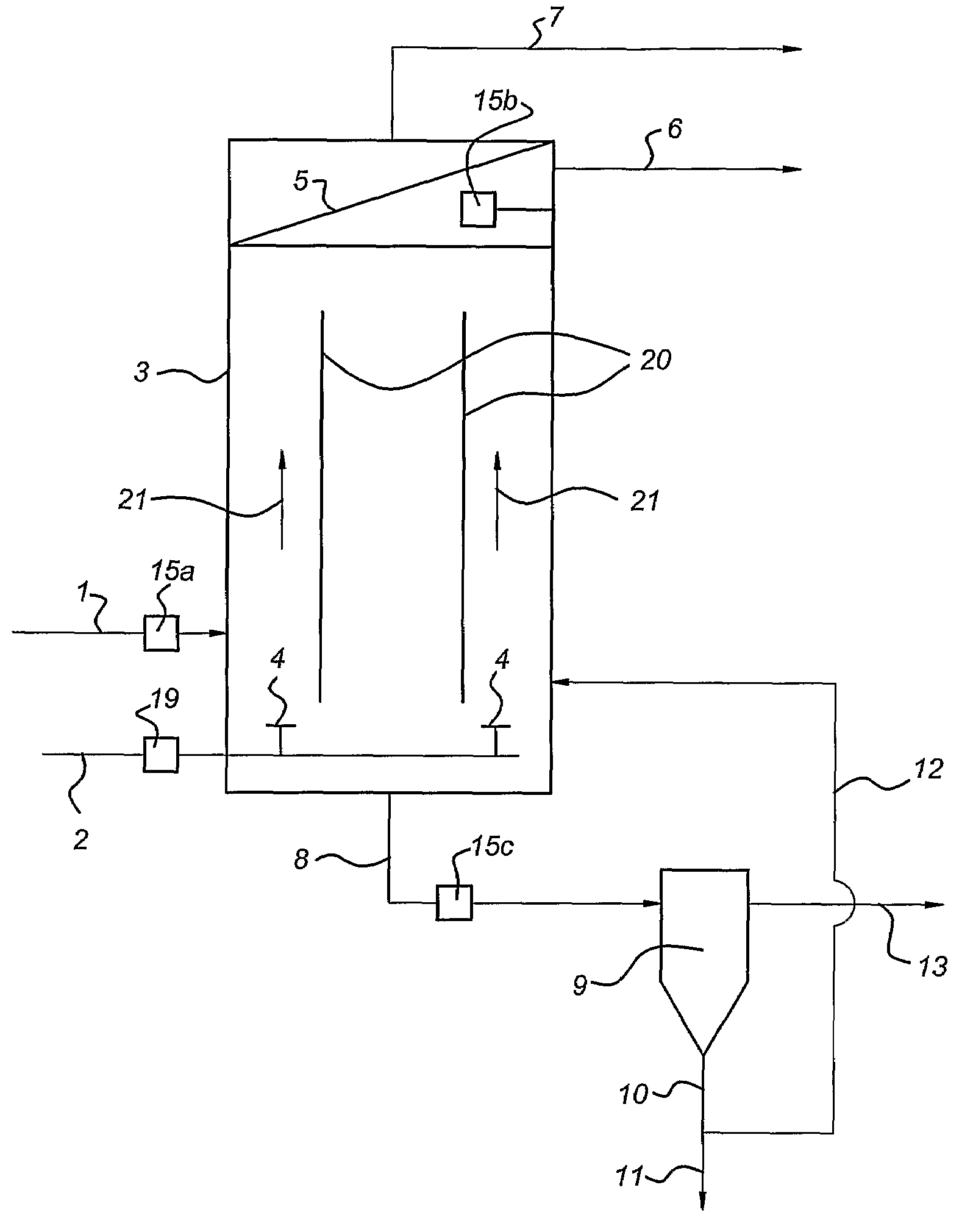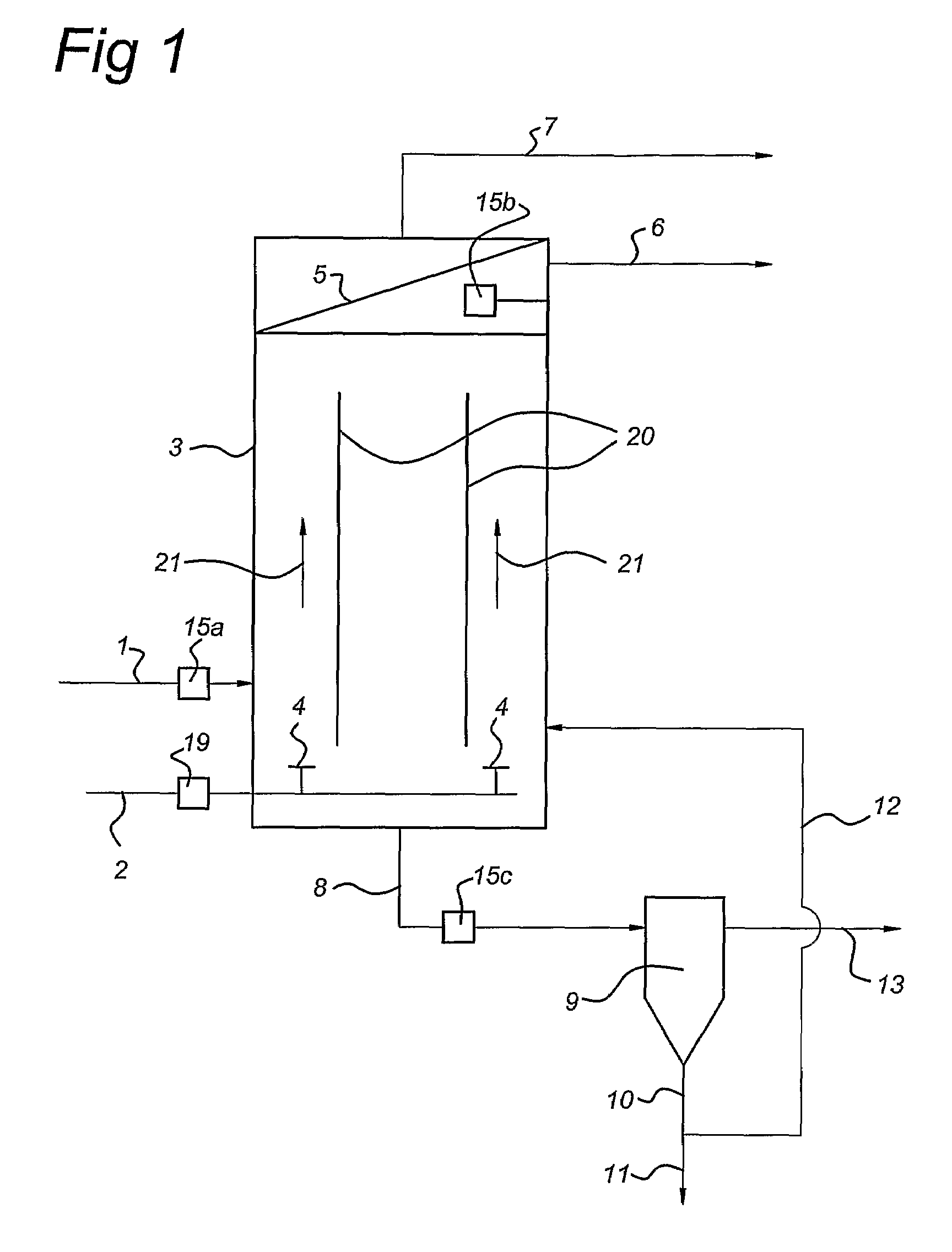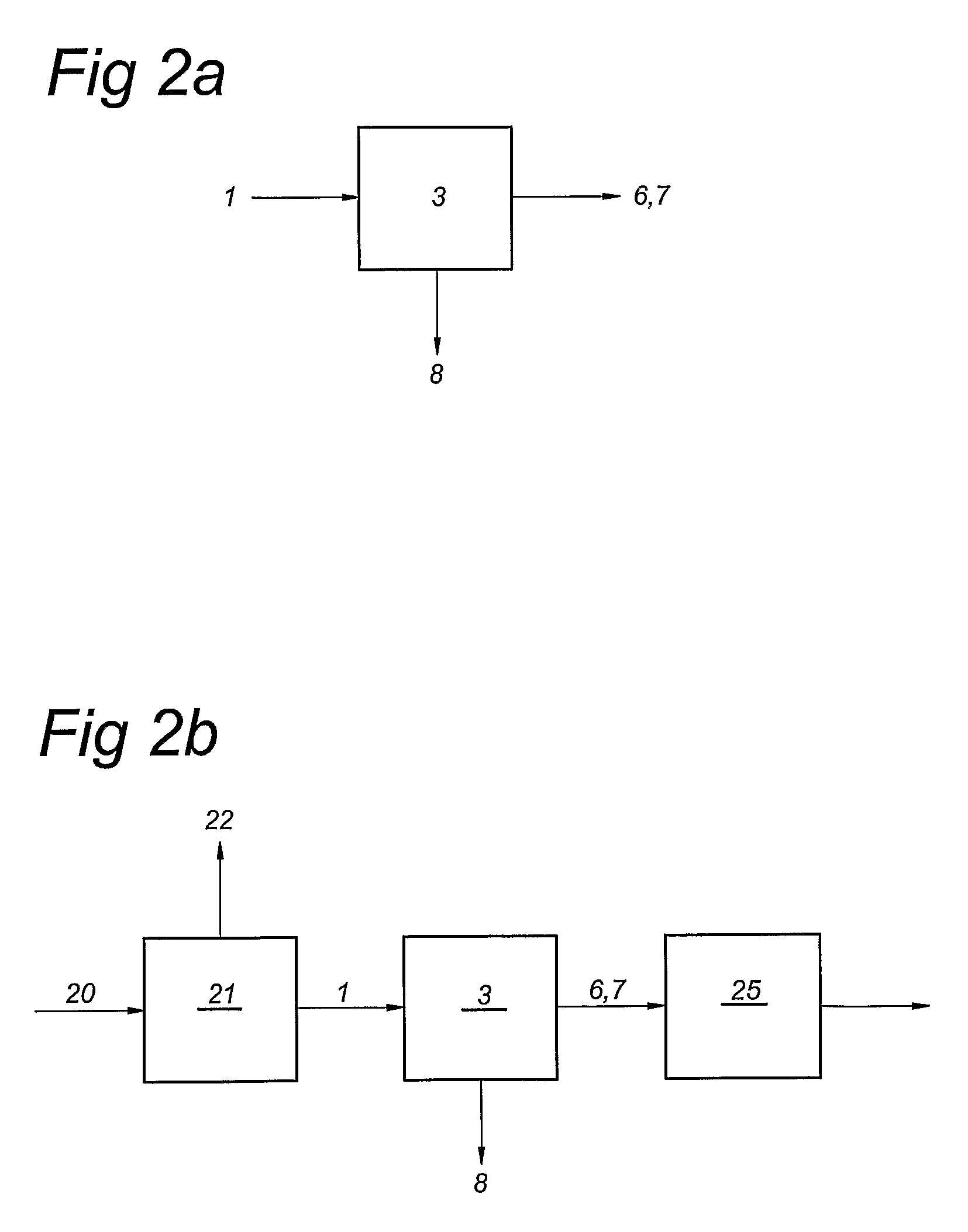Process for the simultaneous removal of BOD and phosphate from waste water
a technology of bod and phosphate, which is applied in the direction of biological water/sewage treatment, water/sewage multi-stage treatment, separation process, etc., can solve the problems of large amounts of water-rich sludge, high cost of dumping, and relatively large part of the cost of dumping water, etc., to achieve the effect of reducing the cost of dumping and dumping
- Summary
- Abstract
- Description
- Claims
- Application Information
AI Technical Summary
Benefits of technology
Problems solved by technology
Method used
Image
Examples
embodiment 1
[0053]FIG. 1 schematically depicts an embodiment of the apparatus of the invention for performing the process of the invention. However, other configurations are possible. This apparatus is also schematically depicted in FIG. 2a (this FIG. 2a also schematically describes an embodiment of the process of the invention).
[0054]Through an inlet for the liquid containing BOD, ammonium, magnesium, phosphate and biomass, the liquid influent 1 is fed to reactor 3. Alternatively, one or more of BOD, ammonium, magnesium, phosphate and biomass may be fed separately to the reactor (not shown in FIG. 1), because one or more of them are not comprised in the liquid stream, or are not comprised in the liquid stream in the desired amount(s). For example, biomass may be added to liquid 1 but biomass may also be present in reactor 3 and / or added to reactor 3 during the process. Usually, the liquid influent will comprise BOD, ammonium and phosphate. Additional phosphate or ammonium may be added to liqui...
embodiment 2
[0061]FIG. 2a schematically depicts the apparatus and process of the invention (as described in embodiment 1) and FIG. 2b schematically depicts an embodiment with possible additional reactors or process steps, which are further described below.
[0062]For example, the apparatus of embodiment 1 may further comprise a reactor 21, wherein liquid stream 20 (containing BOD that can be treated anaerobically and aerobically) is anaerobically treated in reactor 21 such that a liquid stream 1 is provided (containing less BOD than before the treatment in reactor 21) and biogas or methane 22. Liquid stream 20 may be the same as liquid stream 1 of embodiment 1. Liquid stream 20 now further proceeds as liquid stream 1 to reactor 3 (see further embodiment 1). Part of the liquid effluent from reactor 3 may be fed via line 6 to a reactor 25 (e.g. a Canon, see above). Further, part of ammonia containing gasses from reactor 3 may be fed via line 7 to reactor 25. Here, ammonium is treated such that N2 i...
embodiment 3
[0063]This embodiment describes a combination of a digester plant and the reactor of the invention. A digester plant for digesting biological materials provides a waste water stream, containing BOD, ammonium and phosphate. The waste water stream is fed to the reactor of the invention and the process of the invention is applied, e.g. as continuous process. BOD, ammonium and phosphate are at least partially removed. Part of the remaining ammonium (after the process of the invention) may also be removed in a subsequent reaction with anammox bacteria (e.g. Anammox, Canon).
PUM
| Property | Measurement | Unit |
|---|---|---|
| biomass retention time | aaaaa | aaaaa |
| wt. % | aaaaa | aaaaa |
| wt. % | aaaaa | aaaaa |
Abstract
Description
Claims
Application Information
 Login to View More
Login to View More - R&D
- Intellectual Property
- Life Sciences
- Materials
- Tech Scout
- Unparalleled Data Quality
- Higher Quality Content
- 60% Fewer Hallucinations
Browse by: Latest US Patents, China's latest patents, Technical Efficacy Thesaurus, Application Domain, Technology Topic, Popular Technical Reports.
© 2025 PatSnap. All rights reserved.Legal|Privacy policy|Modern Slavery Act Transparency Statement|Sitemap|About US| Contact US: help@patsnap.com



